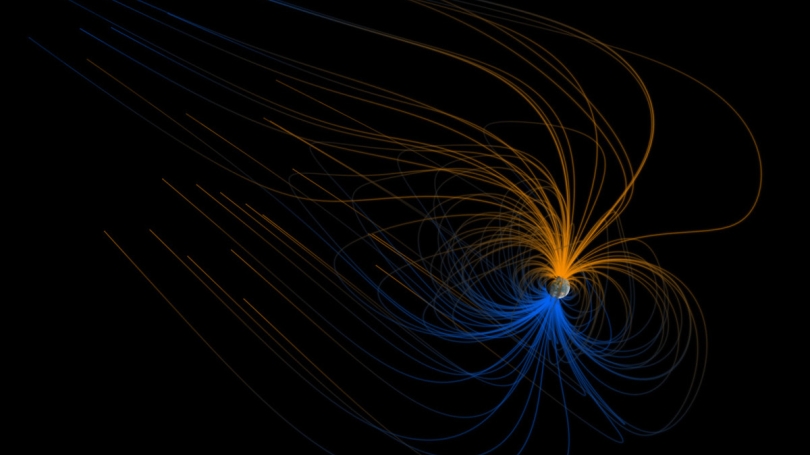

The multi-institutional project was chosen for a concept study as part of NASA's Heliophysics Small Explorers program.
NASA selected a research project led by Robyn Millan, the Margaret Anne and Edward Leede '49 Distinguished Professor of Physics and Astronomy, for its Heliophysics Small Explorers program.
Millan's project was chosen for a nine-month concept study alongside three other heliophysics "small explorer missions"—projects that aim to expand knowledge of the dynamics of the sun and related phenomena to better understand the sun-Earth connection. Any missions selected to move forward after the concept studies will join NASA's heliophysics mission fleet, which provides deeper insight into the mechanics of the universe and helps enable space exploration.

Millan is partnering with the Johns Hopkins Applied Physics Lab, which will provide the mission management and design two of the three instruments. The third instrument, an auroral imager, is being developed by the Space Sciences Laboratory at the University of California, Berkeley, and the Utah State University Space Dynamics Laboratory.
The project, which will also be supported by researchers at several other institutions, focuses on the development of a nine-satellite constellation called CINEMA, short for Cross-Scale Investigation of Earth's Magnetotail and Aurora. The study aims to illuminate the structure and evolution of Earth's plasma sheet—a long sheet of denser space plasma in the magnetic fields flowing behind Earth known as the magnetotail—and how these magnetic fields transfer heat and change over time.
CINEMA will orbit Earth from pole to pole, measuring energetic particles in a range of energy values as they come down to Earth from the magnetotail. It seeks to capture the magnetotail's footprint, thus revealing its evolution.
"Earth's magnetosphere is among the most dynamic systems studied in heliophysics," Millan says. "With its constellation, CINEMA would be the first mission to provide a cross-scale view of Earth's magnetotail and aurora."
Earth's magnetotail stores massive amounts of energy that it releases regularly, sending energy and particles toward the planet's atmosphere to generate spectacular auroral shows like the Northern Lights. Sometimes, this release appears gradual and steady. Other times, it's sudden and explosive. Exactly when and how the tail releases the stored energy remains a mystery.
"CINEMA would let us delve into Earth's magnetotail, giving us a chance to learn much more about when and how it decides to explosively release stored energy," says Johns Hopkins space physicist Sasha Ukhorskiy.
"These four mission concept studies were selected because they address compelling science questions and could greatly impact the field of heliophysics," said Nicky Fox, the associate administrator for science at NASA Headquarters in Washington. "These mission proposals are exciting because they build upon and complement the science of our current mission fleet, have the potential for broad impact and could provide new and deeper insight into the solar atmosphere and space weather."
NASA plans to make its final Heliophysics Small Explorers mission selection in late 2024.